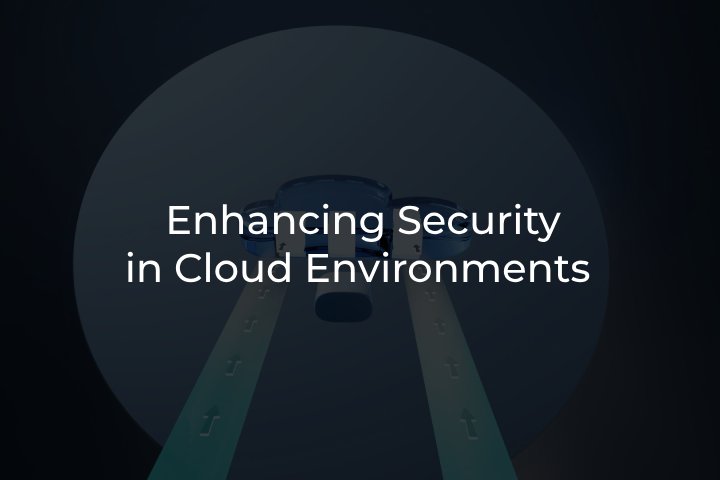
Enhancing Security in Cloud Environments through AWS Organizations and Account Structuring
In today’s cloud environments, security is a top priority, and AWS Organizations offer powerful tools to help achieve better control and protection. By properly structuring AWS accounts, you can enhance security, streamline management, and ensure that only necessary permissions are granted.
This article will explore how AWS account structuring improves security, including creating specialized accounts for specific tasks, managing data and logs, and using AWS tools like CloudTrail, Grafana, and AWS Config to monitor and protect your resources more effectively.
AWS Organizations
A primary security principle is the organization of AWS accounts to ensure proper control and protection. The main AWS account holds critical information, such as payment details, and has access to all other accounts. Due to its significance, this account requires the highest level of protection. Access to this account is restricted to essential tasks, such as updating payment information, with routine operations being handled through other accounts.
To improve security and simplify management, additional accounts are created. Functions such as identity management and task delegation are separated into specific accounts, ensuring that only necessary permissions are granted. Access to the main account is strictly limited. Administrators control access across all accounts to maintain proper security boundaries.
Specialized accounts are also established for specific tasks. For example, a network account is created for DevOps specialists to manage shared network resources. This includes setting up common networks and handling connections between offices. By using dedicated accounts for these purposes, unnecessary exposure to sensitive resources is minimized.
In terms of domain management, a main domain is established for the project, with subdomains delegated as needed. This structure improves resource management and ensures better control over the environment.
Shared accounts are set up for common resources such as an S3 bucket used to store project data. Centralizing shared services in dedicated accounts simplifies permission management and enhances data security.
A critical aspect of the security framework is the creation of a security organization unit, along with a dedicated security account. This account aggregates logs and security data from across all projects. By consolidating security information, incidents can be monitored and responded to more efficiently, without needing to check each account separately.
The organization can be divided into different units for specific functions, such as SDLC, machine learning, and production. These units help organize resources, apply control policies, and maintain clear separations of responsibility, ensuring better oversight and security.
Central control policies are implemented within each unit to restrict certain actions and reduce risks. For instance, in one unit, the creation of unauthorized server types is prohibited, helping to prevent unwanted activities such as server provisioning or unauthorized mining. Policies also prevent the deletion or modification of critical data, ensuring that only authorized actions are allowed.
Finally, serverless technologies are employed in machine learning workflows. For example, images are processed through a serverless pipeline, where they are uploaded, processed, and recognized using machine learning models. This approach helps scale operations efficiently while reducing the complexity of managing infrastructure.
Data Monitoring and Auditing with AWS
Monitoring, a key part of our security framework, requires quick detection of anything unusual. To do this, you can rely on Grafana to build custom dashboards. It is much more convenient to visualize your data and create the detailed charts you need. Compared to CloudWatch, Grafana offers more flexibility and gives you better insight into how your system is performing in real-time.
To keep track of performance and diagnose issues in your application, you can use Amazon CloudWatch. You also get real-time metrics about how your system is performing. For visualizing and analyzing data use Grafana, a tool that provides powerful dashboards and allows you to create custom visualizations for the metrics that matter most.
Infrastructure Auditing: AWS Config and Detective
When it comes to infrastructure auditing, you can opt for AWS Config to track changes in your environment. Config lets you see what changes have been made to your resources over time, helping you understand why something might have gone wrong. If there is an infrastructure issue, you can quickly trace it back to the configuration changes that led to it.
Next, you can also use AWS Detective to dig deeper into security incidents. It helps understand what happened during an incident by providing a visual timeline of events. If something suspicious occurs, you can quickly trace the sequence of actions, which makes investigations much faster and more efficient.
For auditing, especially when it comes to tracking who is accessing what data, AWS CloudTrail is great. This service logs every action taken in your AWS environment – from user logins to changes made to data. It ensures HIPAA and SOC 2 compliance too. If something goes missing or is modified, you can quickly see who did it and when. This is a huge help in maintaining security and accountability.
With that said, CloudTrail works at the account level, so it is great for tracking activity within AWS itself. But when you need more detailed visibility, say, to see exactly what changes were made to a database or an application, you need to set up additional auditing processes and integrate other AWS tools.
Data Safety and Security
For HIPAA compliance, ensuring data safety and security is essential. This includes encrypting data both in transit and at rest, meaning that all traffic is encrypted during the sending of the data and its storage. Specifically, all databases must be encrypted, and you must make sure that all network traffic remains secure. When using Amazon services, the risk of a data breach or attack is significantly reduced, as there is a low probability of an attack succeeding if an interceptor is placed during data transmission. In contrast, for projects with less cloud infrastructure, the risk is much higher, as data traffic may not be encrypted during transmission between servers.
Following HIPAA standards, it is essential to implement comprehensive logging practices. Logs should be maintained for network activities, tracking who is accessing data and where they are going. Additionally, logs should be kept for all applications, ideally for at least a year, and ideally continuously.
To further secure the project, two-factor authentication should be used to strengthen user access controls. It is also important to ensure that HTTPS is implemented to safeguard web traffic. Session lengths should be clearly defined and monitored, and an SIEM (Security Information and Event Management) system should be integrated into the project. This is under both HIPAA and SOC 2 requirements, and it’s important to note that Amazon provides these capabilities, eliminating the need for purchasing costly third-party software to meet compliance requirements.
By following these best practices, you can be sure that data is secure and HIPAA-compliant throughout its lifecycle.


